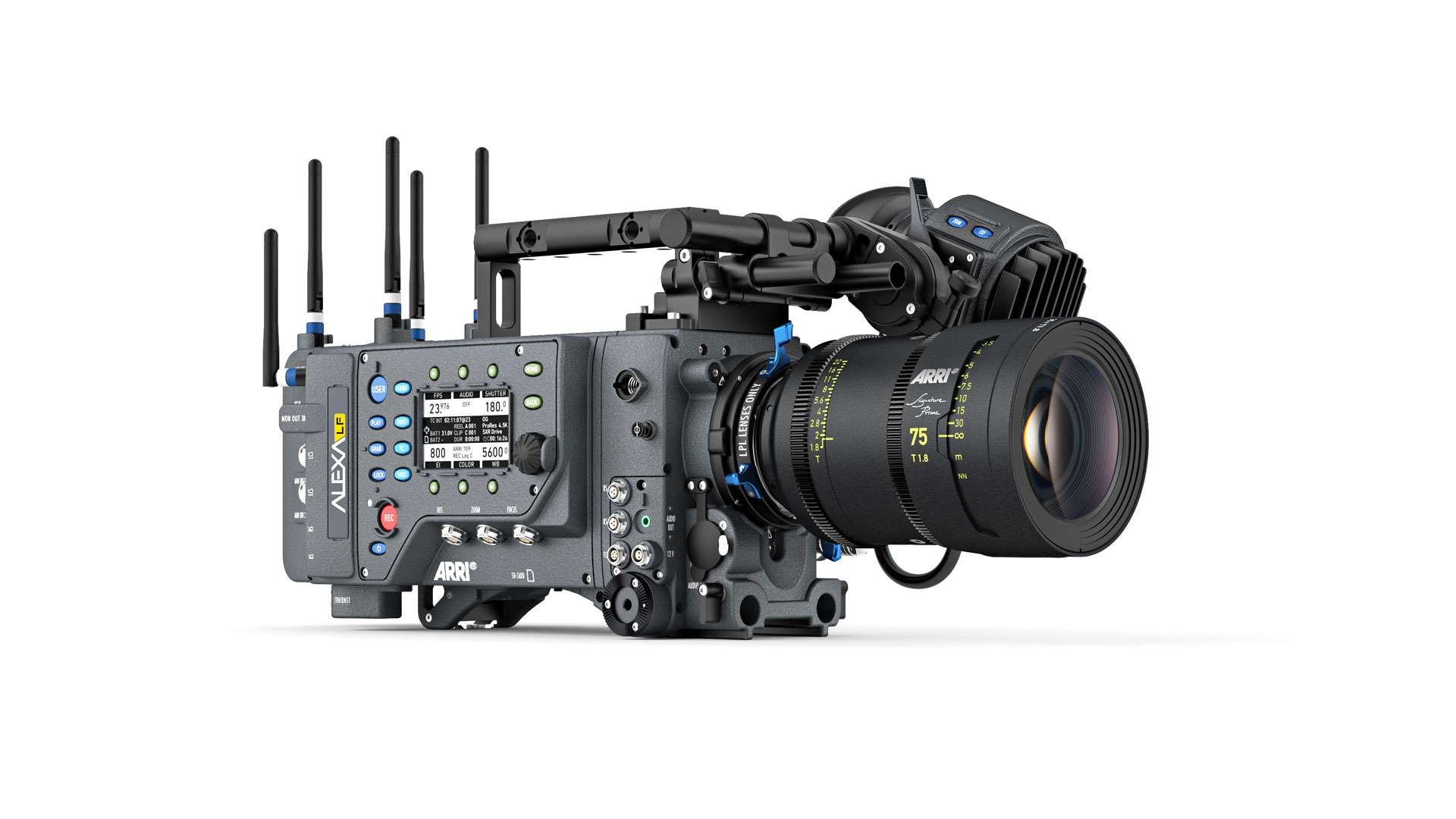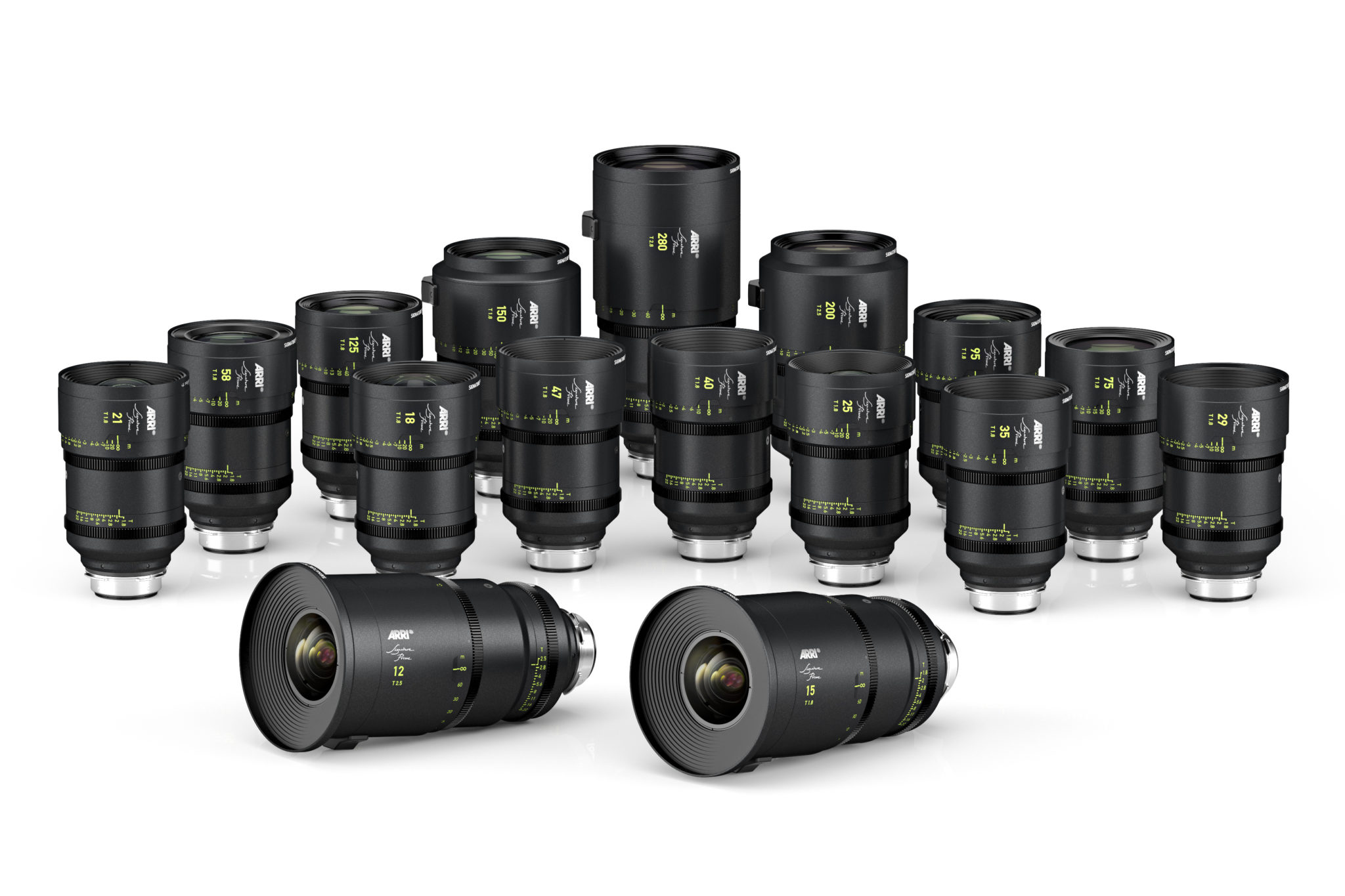Full-Frame Sensor Adds Resolution Without Altering Size of Photosites
ARRI announced the Alexa LF, a new camera with a large-format image sensor that can capture imagery at about 4.5K in open-gate mode, or at UHD resolution when shooting 16:9.
ARRI said the new sensor is really just a bigger version of the existing Alexa sensor, upscaled to 36.70×25.54mm, which is slightly larger than full frame. In Open Gate mode, the Alexa LF captures at a native resolution of 4448×3096. A 16:9 mode is tailor-made for capturing UHD footage at 3840×2160 (using a 31.68×17.82mm cut-out of the sensor) as well as downscaled ProRes 2K (2048×1152) or ProRes HD (1920×1080), while a 2.39:1 mode captures footage at 4448×1856 in the wider ‘scope aspect ratio.
Anamorphic shooters will use the Open Gate mode with full-frame lenses, while Super 35 lenses will require use of a 6:5 center portion of the 16:9 sensor mode, which must be cropped in post.
“The larger Alexa LF sensor has the same optical pixel size as other Alexas, resulting in a 4448×3096 image,” said Marc Shipman-Mueller, ARRI’s product manager for camera systems, in a prepared statement. “This doesn’t just add definition, it creates a whole new look — one that is truly immersive, with a three-dimensional feel.”
ARRI rates the Alexa LF’s exposure latitude at 14+ stops and EI 800, and the camera has eight FSND filters that can be inserted manually, ranging from ND 0.3 to ND 2.4. ARRI’s wireless remote and video systems as well as Wi-FI connectivity are built into the camera. It weighs 17.2 lbs. (7.8 kg) and measures 14.33×7.91×6.22 in. (364x201x158 mm).
Shipments of the Alexa LF are expected to begin at the end of March, the company said.
In the Californian desert, cinematographer Dan Laustsen ASC, DFF accompanies two climbers for a day on the rock. Embracing available light conditions ranging from strong daylight to flickering firelight at night, Laustsen reveals the stunning skin tones, gentle fall-off and immersive look of the Alexa LF camera and ARRI Signature Prime lenses.
Source: ARRIChannel (YouTube)
It’s been a long wait for a 4K Alexa, with the company insisting, not unreasonably, that resolution is not the most important factor in determining overall picture quality, and many productions and cinematographers have happily made the Alexa their go-to camera despite competing systems that deliver more pixels. The position became less tenable as streaming services like Netflix and Amazon, eager to differentiate themselves from traditional broadcast and cable programming, began to insist on native 4K acquisition and delivery.

The Alexa LF is closer in size to the Alexa SXT W than it is to the 6.5K Alexa 65.
ARRI
The 6.5K Alexa 65 addressed the problem for some high-end projects, but with a much larger sensor and more demanding lensing and workflow requirements. The Alexa LF is smaller than the Alexa 65, but slightly bigger than the Alexa SXT W.

Here’s how the Alexa LF’s different shooting modes break down in terms of sensor area, resolution, and maximum frame rates.
ARRI
For slow-motion, the Alexa LF’s frame rate tops out at 150fps, achievable when shooting ARRIRAW in the camera’s 2.39:1 mode. Shooting in Open Gate mode, the maximum is 90fps of ARRIRAW. Shooting to SxS Pro+ cards in 16:9 or Open Gate modes, the camera maxes out at 60fps of ProRes.
The Alexa LF camera system includes a newly designed LPL lens mount with a wider diameter (62mm) and shorter flange focal depth (44mm) than the usual PL mount, which the company says allows the use of smaller, more lightweight lenses. ARRI said it will make the LPL mount available for other cameras, including ARRI models as well as those from third-party licensees, and will also offer a PL-to-LPL adapter for backward-compatibility with Super 35 and full-frame PL-mount lenses.
In contrast with other Alexa LF showreels exploring low light and shadow, cinematographer Tom Fährmann BVK shot a diverse palette of faces and skin tones against a white background. Varying portrait lighting illustrates the humanity, color and exceptional clarity of the ALEXA LF/ARRI Signature Prime combination.
Source: ARRIChannel (YouTube)
ARRI is backing the Alexa LF with a line of 16 large-format Signature Prime LPL-mount lenses ranging from 12mm to 280mm. (Most of the lenses are T1.8; the 150mm and 200mm lenses are T2.5 and the 280mm is T2.8.) The lenses are built with machined magnesium barrels and incorporate ARRI’s new LDS-2 data system, which is also being licensed to third-party vendors. The first four lenses (35mm, 47mm, 75mm and 125mm) are set to ship in June, ARRI said, with the remaining dozen scheduled to arrive by the end of the year.

